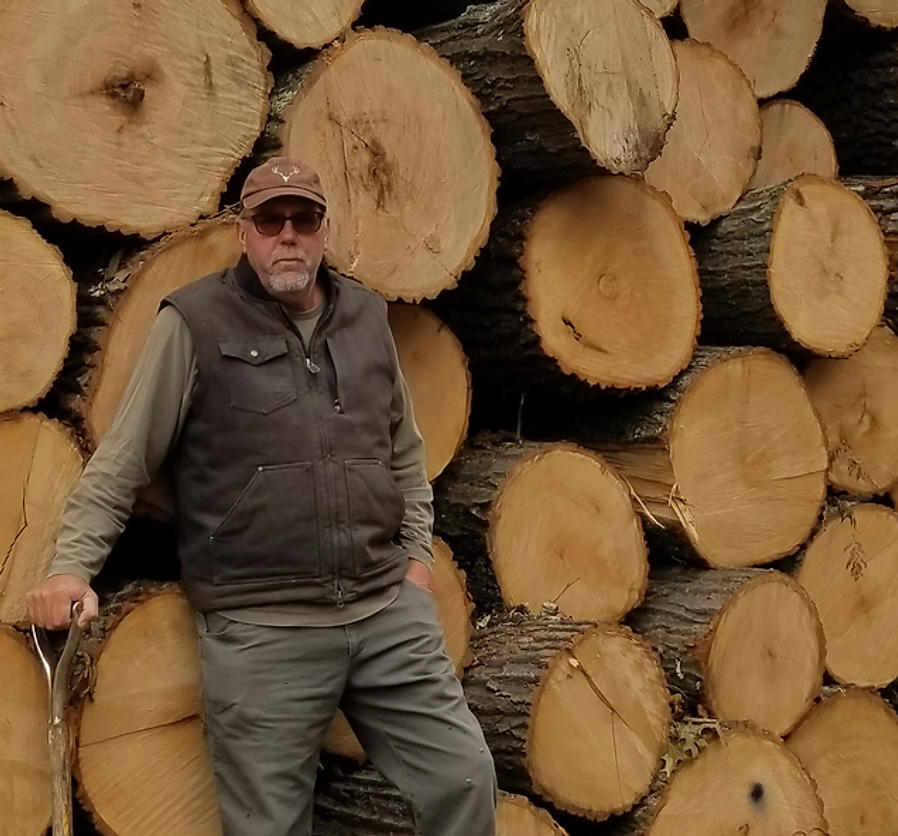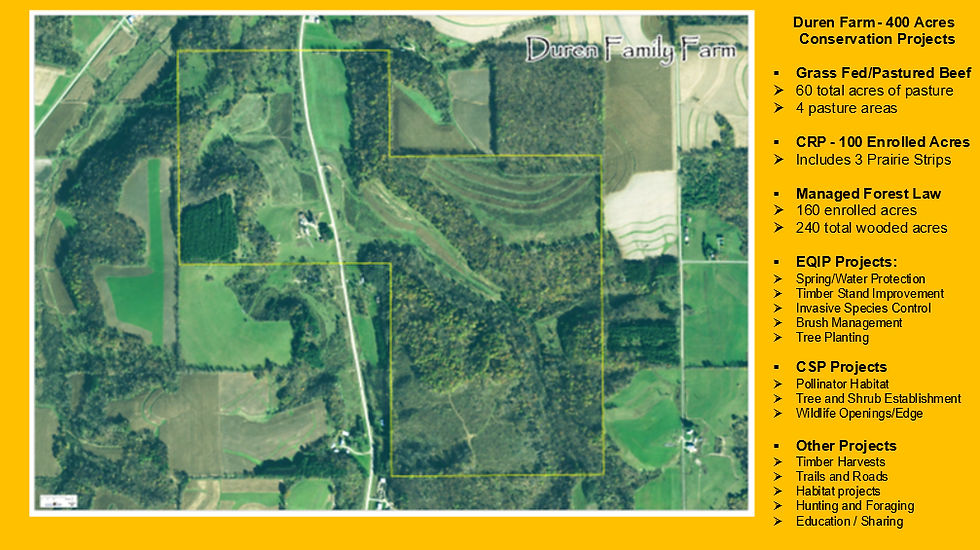
“It’s Not Ours, It’s Just Our Turn.”
Doug Duren is a passionate hunter, farmer, land manager and conservationist. He is the owner of Lone Oak Interests, LLC. Doug also manages the Duren Family Farm near Cazenovia, Wisconsin.
By Denise Thornton
The 400 acres that Doug is stewarding were purchased by Doug’s great-grandparents in 1903. They came from Germany and were sawyers, so they bought land to clear the timber and sell it. “That was their business model,” says Doug Duren.

“As you can imagine, they first took the wood off the flat ridges and the flatter bottoms that weren’t wet, but there are still 240 wooded acres on the farm.” The land passed to Duren’s grandfather, who continued to run a sawmill and, with his business partner, built a seven-mile railroad track from Cazenovia to LaValle for getting their products to market. “By the time I was a kid, the lumber mill industry was done,” remembers Duren. “My grandpa got out of the sawmill business right after World War Two, but he still managed the woodlands in a sensible way.”
After his grandparents were gone, Duren’s parents settled up with the rest of the family, and the farm was theirs. It was run as a dairy farm until 1988. Eventually the land passed to Duren and his brothers and sisters. “We lost my youngest brother, Matt, in a car accident in 1995, so we named the property Matt’s Last Tree Stand LLC. Today Duren manages the land not only for his family — but for a larger community.
“I had a lot of practical experience with woodlands. I grew up with these trees and could identify each species. I remember going out as a kid when Grandpa had some trees cut. My brothers and I would count them and keep track of all the white oak, red oak, and maple,” Duren says.
When he took over management, Duren began by working with several DNR foresters who walked him through the different options in his woodland. “We had 11 separate stands, and there were different possibilities for each of them,” says Duren. “We entered 160 acres into Managed Forest Law (MFL) in 2006,”
Part of the management plan is a program to regenerate red and white oak. “As part of our MFL, we planned and executed a shelterwood harvest for red and white oak working with both DNR foresters and a consulting forester,” Duren continues. “Oaks have been a major component of the Driftless Area, but because they are a sun-loving species, and partly because deer love to eat white oak acorns and browse their buds, this area has a shortage of young oak trees.”
According to the Harvard Forest website the shelterwood method is a silvicultural approach through which a new generation of trees is established naturally under the shelter of older trees by a series of partial cuttings intended to: stimulate seed production, create favorable seedbed conditions on the forest floor, and supply the young seedlings with sufficient room and light for healthy growth.
“With a shelterwood harvest, you clean out as much of the non-merchantable growth as you can, (the small trees that go crazy as soon as you give them light) and then you take off about half of the mature oaks. Those oaks were giant and gun barrel straight,” says Duren. “We timed the cutting to acorn production, so all those acorns got shoved into the ground. Five years go by, and then you cut the remaining oaks, giving those sun-loving young oaks what they need. There are so many oak seedlings that it overwhelms the deer — more than 10,000 seedlings per acre in some areas. It’s called swamping. In a hundred years, it should look the way it did before we cut it. I’m happy to report that eight years since the second harvest, we now have a great many young oaks up above the browse line.”

“Aldo Leopold and his Land Ethic have inspired Duren and his family in the management of their property. When working with DNR forester Mike Finlay on the shelterwood harvest, they were looking at the woodland, and Finlay said, “I really admire you and your family for doing this. It’s a big commitment. You are killing these giant trees, and it’s a leap of faith.”
At that moment, Duren had an epiphany. “I felt like the past and future generations were all there, and I said, ‘Well, Mike, I guess it’s not ours — it’s just our turn. That has become our family conservation motto — the idea that we are honoring the past while living in the present and doing the best thing for the future. That is the lens we see everything through now.”
When the logs from the shelterwood harvest were sold, the money went into a fund for capital improvement. Duren also has other revenue streams that cover yearly expenses, and the farm serves as an example of how conservation practices can be sustained.
Duren urges landowners to explore funding sources like the Conservation Reserve Program (CRP), the Environmental Quality Incentives Program (EQIP), and Managed Forest Law (MFL). He also takes advantage of information resources like the DNR Forestry Department, The USDA Natural Resources Conservation Service (NRCS), University of Wisconsin Extension, My Wisconsin Woods, and The Aldo Leopold Foundation. He recommends a book by his friend, Michael Snyder, Wood Whys: An exploration of forests and forestry. “It’s very important for land owners to take advantage of the information and assistance that is out there,” he says.
Duren also developed a cooperative hunting lease arrangement on his land, where hunters are given hunting rights in exchange for work on the farm. Read more about this in the MWW article from November 17, 2022 on Forest Land Leasing Options.

“Hunting is our number one deer repellant,” says Duren. “We shoot a lot of deer on our farm. We love the deer, but we don’t want them to be a detriment to the rest of the biotic community.” Duren sees many advantages to offering hunters the opportunity to hunt on his property in exchange for assistance in his conservation efforts. “There is a high demand for access to hunting,” he says. “There are many people who are interested not only in hunting but in conservation. The whole process becomes a fuller, richer experience for everyone based on conservation, cooperation, and community.”
“There has been someone in every generation of our family to take care of this land. I began taking over the management 25 years ago, not long after my brother died. That forced us to put a plan together as a family. I am the managing partner of the family LLC. My two sisters and two brothers are the other members, and we each own 20 percent.
“It’s fun work, and we’re having a blast doing our bit. And getting so many people involved in the various aspects of conservation is bigger than family — it is community.”
